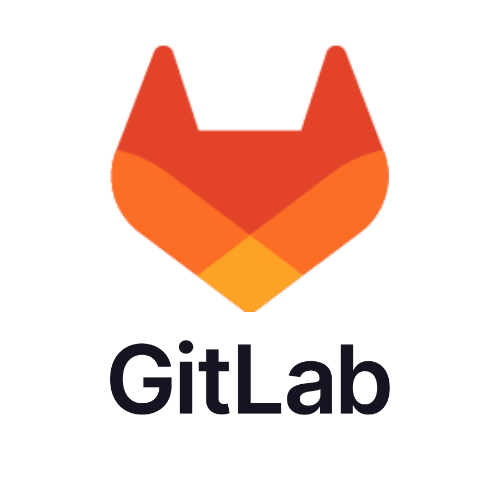“Too many conflicting commits” can be a challenge you face with your developers as well as an issue for your CI/CD pipelines. DevOps is indeed getting more complicated as it evolves to meet demands for real-time security, automated decision-making, infrastructure management, and more. Therefore, human error is a more significant challenge now than ever. Not just conflicting commits, but deployment failures, security vulnerabilities, and compliance gaps have been costing businesses a lot of resources that could be better used elsewhere. Machine Learning (ML) offers a promising outlook against these challenges by offering impactful services like automated monitoring, workflow optimization, data-driven decisions, and more. Platforms like GitLab can offer simplified means to bring ML and CI/CD together with the right features and frameworks for AI-driven decision-making, automated security, and more.
In this blog post, we will look at why CI/CD pipelines desperately need ML to eliminate human errors and how Gitlab can effectively offer just that.
The impact of human error in CI/CD pipelines
Despite the push for automation, manual intervention has been necessary for DevOps for reasons like supervising deployments, resolving merge conflicts, or handling security exceptions. However, it leaves the door open for human errors that can sabotage the entire CI/CD pipelines and, therefore, the SDLC itself. Some major human errors can cause challenges for CI/CD:
- Misconfigurations: Missing API keys, entering wrong database URLs, or any other such configuration errors can lead to frustrating downtimes or even dangerous security loopholes in applications. These get more common as abstraction technologies like Infrastructure as Code demand detailed configurations to run smoothly.
- Merge conflicts: With too many modules coming together, especially in platform engineering, it is easy for manual users to overlook issues with code reviews. Such faulty codes can break the build when triggering code merges, leading to unstable releases.
- Inconsistent testing: Manual intervention in testing is necessary to ensure that the testing tools, test cycles, and other resources aren't wasted. However, decisions like skipping integration testing or not running sufficient test cases for load testing can harm an application's performance.
- Security oversight: More often than not, the human error-related challenges discussed above lead to security loopholes that developers can exploit to corrupt the supply chain, access critical data, hamper network performance, and more. Security is easily the most vulnerable component in the CI/CD pipeline regarding manual supervision.
How does Machine Learning enhance DevOps automation?
With so many concerns related to human error and manual intervention in CI/CD pipelines and their complex workflows, a technology like machine learning can take up a lot of heavy lifting. ML models can introduce “smart” features that can help reduce the need for manual handling of processes like code integration, testing, security checks, and more. Here are some essential features that machine learning can offer:
- Pattern Recognition: ML’s biggest offering is its ability to recognize patterns that are often missed by manual eyes. By training the models on historical data for testing results, building metrics, deployment issues, and more, DevOps teams can ensure smoother CI/CD processes without needing manual interventions.
- Error detection: With the right training data, machine learning models can help simplify automation for log analysis in CI/CD pipelines. Technologies like natural language processing can help sift through these logs and identify patterns that can lead to discovering and remedying critical anomalies.
- Dynamic generation: ML benefits are not limited to observation and analysis. It can also generate resources like test cases, code corrections, and more to ensure a dynamic and self-healing development process. While manual supervision is still required to ensure the accuracy of these generations, its scope will be limited and less intervening.
- Predictive analytics: Predictive analytics relies heavily on machine learning and can especially help with threat intelligence, continuous monitoring, and automated testing in the CI/CD pipelines. Patterns recognized by machine learning-based tools can help these pipelines be more autonomous with actionable insights.
Integrating ML with GitLab CI/CD
GitLab offers many features to support ML-driven CI/CD automation. Unlike fragmented toolchains, the platform offers a one-stop solution to help DevOps teams manage from source code to deployment. Here are some of its machine-learning offerings for CI/CD:
- Automated code review: GitLab offers ML-powered features for analyzing static code and eliminating potential errors. It can also help review the code for best coding practices to ensure smooth code merges with minimized human error.
- Predictive testing: GitLab offers features for optimizing test strategies based on historical testing data. This helps optimize testing resources while speeding up the CI/CD processes often bottlenecked by manual errors.
- Security and compliance management: GitLab’s ML-driven features offer automated security scans, code vulnerability detection, security-related misconfiguration detection, and more. Therefore, the need for manual intervention goes from a minimum to zero with assured security best practices.
Conclusion
Practices defined by DevOps and CI/CD form the very fabric of software development in the modern world. Since automation is an essential principle in these practices, it would be highly ignorant to allow manual interventions in CI/CD pipelines consistently. Machine learning is an effective technology to eliminate this problem. Platforms like GitLab can help CI/CD processes be error-free to produce more reliable applications and platforms. With the right features and thoughtful strategies, your CI/CD pipelines as well as your developers can eliminate all the insecurities troubling them!







